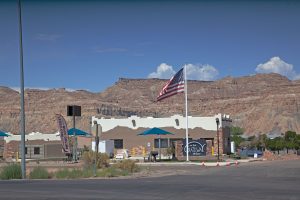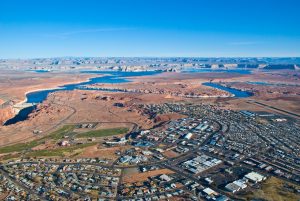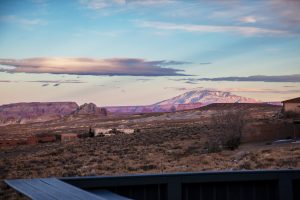Seven of the last eight years the water flowing into Lake Powell from the Colorado River, and upper basin tributaries, has been in the state of drought. 2002 saw only 25% of average inflow in to the lake. Average is such a misleading word when used in describing events in the desert. Not much average happens here.
This year looks like, while not the end of the drought, to at least be a good water year. As of March 2, 2008 snowpack conditions above Lake Powell are at 124% of normal.
Lake Powell is a huge water storage tank. After all of these years of drought, it is low. That means the lake has been doing it’s job providing water to millions of people and agricultural uses downstream. The lake is currently 110 feet below full and is storing 45% of it’s overall capacity.
A wet spring could see an increase of 50 or more feet of water hit Lake Powell during our spring runoff time. Increase in lake elevation usually begins the end of April and winds up the first week of July. 50 feet would help the lake not only in storage capacity, but in recreational opportunities.
There are plenty of areas to “recreate” on at Lake Powell even with the lower water levels. However, tourism has been down here for several years due to a variety of reasons (another blog). The public perception that Lake Powell is empty, or gone, is but one of them. Maybe, as the lake begins to rise and with the media attention just having been focused here with the floods, we will see more tourists visiting.






1 thought on “Colorado River Spring Runoff and Lake Powell Part 1”